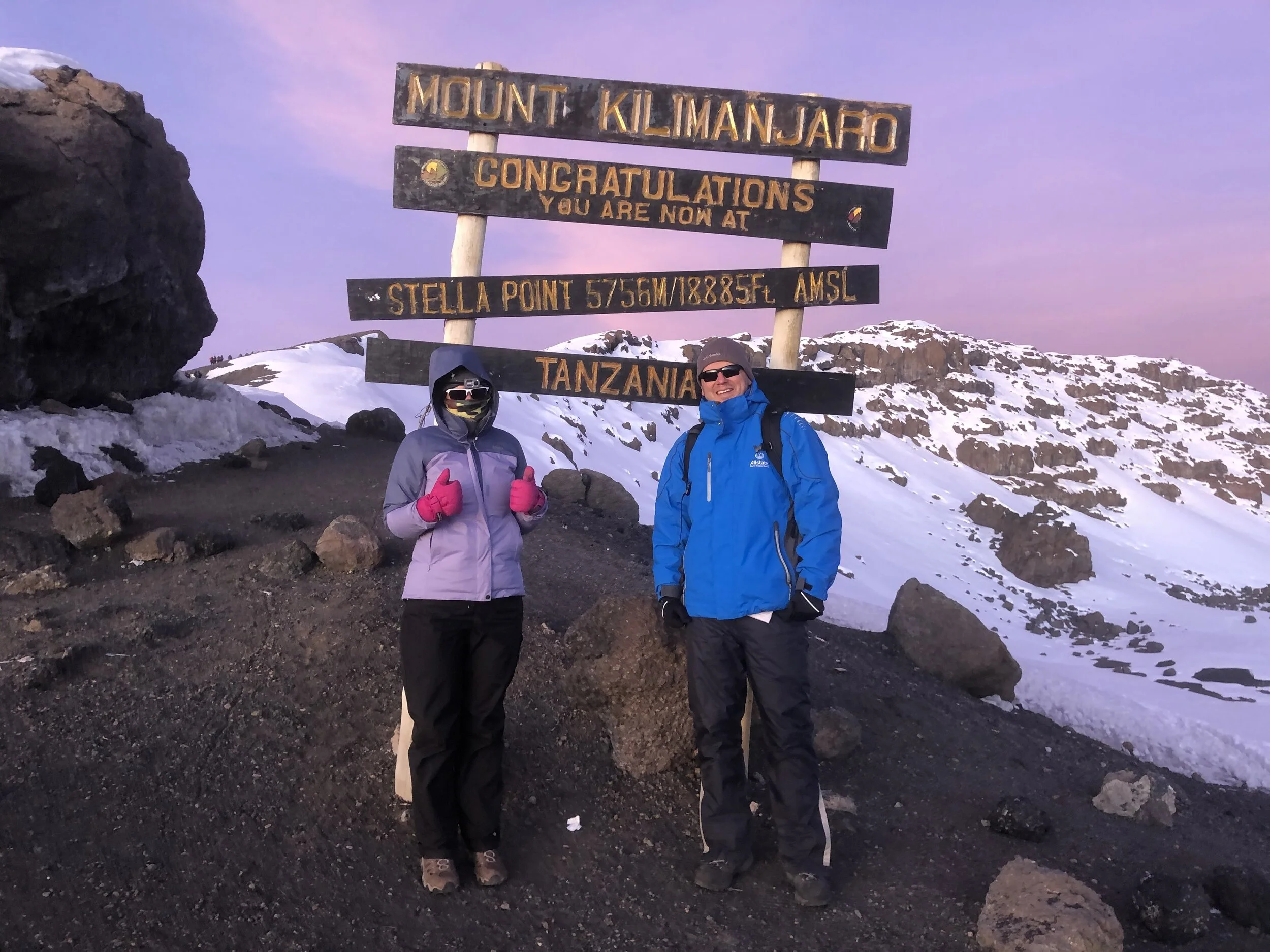Summiting Kilimanjaro: Easier than Childbirth
Summiting Kilimanjaro and giving birth have many things in common - you (hopefully) voluntarily signed up for it and (hopefully) had some time to, if not physically, at least mentally prepare yourself. Both trade temporary pain for longer-term glory. My summiting experience began, like my active labor, in the early hours of the morning.
Looks easy, right?
We left camp at midnight. It was a new moon, so everything was dark except for a dazzling amount of stars. I wore four layers of pants and five shirts/jackets/coats, with toe warmers in my boots. I do not like the cold.
We started the climb up in silent single file: the lead guide, me, my brother, and the assistant guide with an oxygen tank in his pack, just in case. All I could see with my headlamp was the ground directly in front of me and the reflective stripes on the back of our guide’s knees.
He said we leave in the dark because psychologically it is more difficult to continue if you can see how little progress you are making towards the top as you zigzag across the dusty loose rocks. The first time we stopped I thought we must be almost there, but we were only about a quarter up - so I wholeheartedly agree.
Our guide told us the day before we were fast, but I didn’t really believe him until we looked back at the other groups who quickly fell far behind. Peering down all we could see was the bobbing clusters of headlamps moving silently towards us. We kept a slow and steady pace, stopping about every hour for a quick sip of water and to pop a new Jolly Rancher.
By 4 am, we reached Gilman’s Peak at and got our first glimpse of the glaciers. Our guide had us wear our sunglasses at night so we could (so we could) avoid snowblindness from even the reflection of the headlamps. There was a path through the snow, sometimes reaching up to my waist and very narrow.
At Stella Point, a trail from a different camp converged with ours and we met a group of Brits. Our guides, keen to be the first and thus get street (trail?) cred for future gigs, pushed us on to get to the highest peak, Uhuru, before them. As we trudged on, we crossed paths with a solo climber and one guide - coming from yet another trail they had beaten us to the top and we came in second. Not that it is a competition (if we were first I totally would have said it was a competition).
We got to Uhuru at 5:30, before sunrise, and the wind was freezing. We had our guide take a quick photo in the dark then fled cold and the lumbering hoards that were now all converging on the same small spot at the same time.
If you make it to the top and don’t get an Instagramable photo, does it even count?
As we started the descent, the sun began to rise and revealed the expanse of the glaciers and a sea of clouds. Back at Stella Point, we got our sunrise photo and I realized that what I should have been dreading was getting back down to the bottom. My training had focused only on inclines - our gym treadmill doesn’t do downhill! Just like with childbirth, I had fixated on only the apex and forgotten the horrors that lie just on the other side.
Here comes the sun!
On the way down I robbed a bank.
All in all, it was slow, at times tedious, occasionally perilous, and so so cold. But getting to the top of Africa is easier than giving birth. After all, even men can do it.



